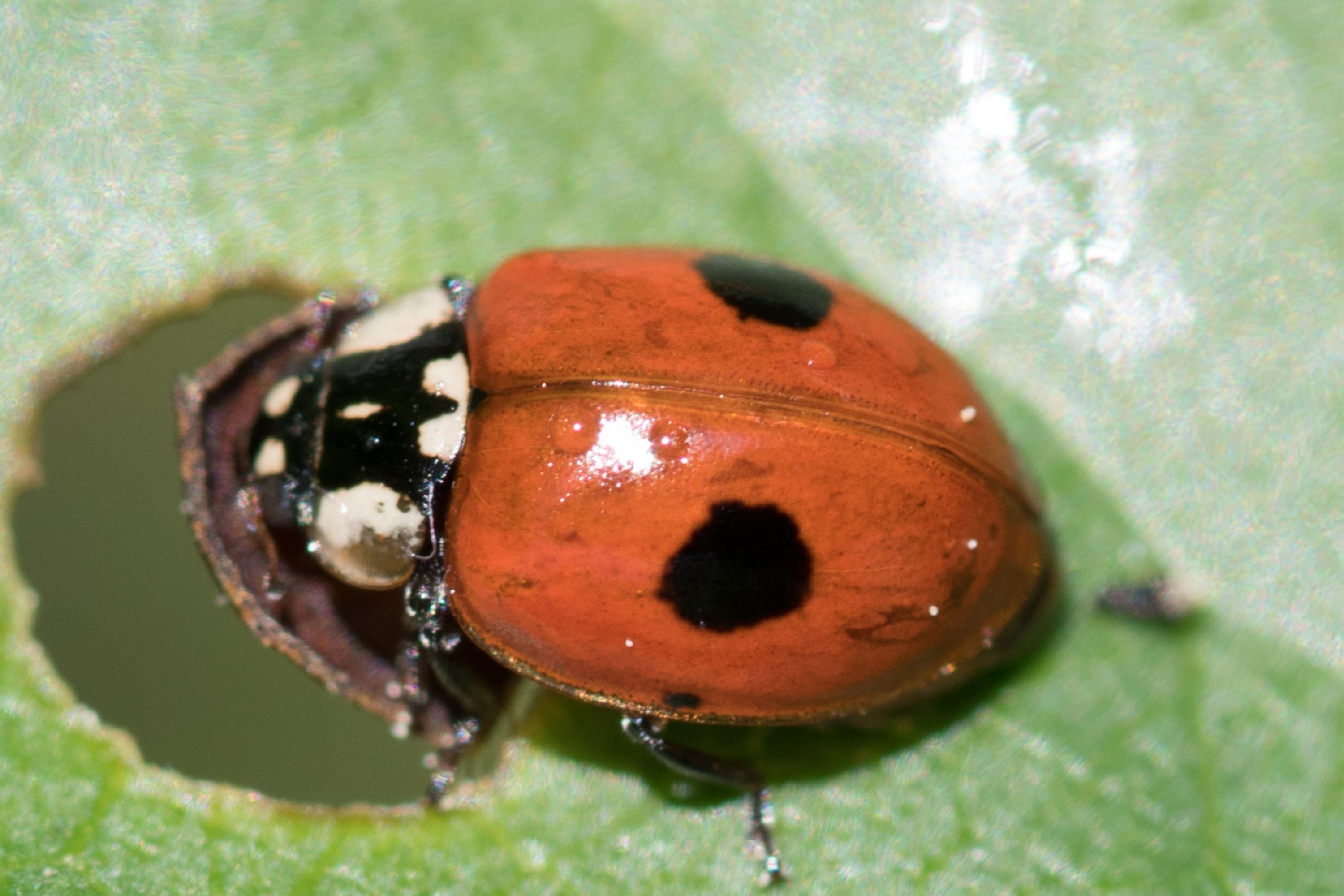Two-spot ladybird
(Adalia bipunctata)

Description
Adalia bipunctata, the two-spot ladybird, two-spotted ladybug or two-spotted lady beetle, is a carnivorous beetle of the family Coccinellidae that is found throughout the holarctic region. It is very common in western and central Europe. It is also native to North America but it has heavily declined in many states and provinces. It is commonly introduced and imported as a biological control agent. Adalia bipunctata is a small Coccinellid that can feature any one of a large selection of red and black forms. Some forms are similar to Mulsantina picta, but the two white spots on the head of Adalia (in contrast with a large white region or more than two spots) readily separate it. Additionally Adalia is entirely black on the ventral surface with black legs, which helps rule out any other options. The two-spotted ladybird is highly variable in many parts of its native range. The most familiar form, form typica with two black spots on a red base, is common throughout. A melanistic form that is black with four or six red spots is uncommon, but not rare, while the truly melanistic form purpurea is exceedingly rare. In North America the species shows the most variation, with several forms that do not occur elsewhere including a spotless form, a four-banded form, a nine to twelve spotted form, and a "cross-hatched" form. In addition, there are intermediate forms such as form annulata, but they occur rarely. The two-spotted ladybird was one of the many species originally described by Carl Linnaeus in his 1758 10th edition of Systema Naturae; its original name was Coccinella bipunctata. Its specific name is from the Latin bi- "two", and punctata "spotted". The two-spotted lady beetle's life cycle starts with eggs that are usually laid in clutches.The larva hatches from the egg by biting a hole in it. The larva looks very different from an adult; it has an elongated, grey, soft body with six legs but no wings. They are cannibalistic. A larva goes through four larval stages: by eating it grows and at some point it sheds its old skin and appears in a new one in which it can grow more. The last larval stage is approximately the size of an adult beetle. Once it has eaten enough, the larva attaches itself to a substrate and moults into a pupa. Inside the pupa, the adult develops. Finally the adult ecloses from the pupa.
Taxonomic tree:







